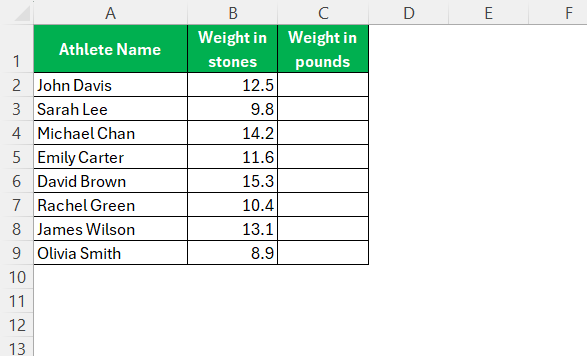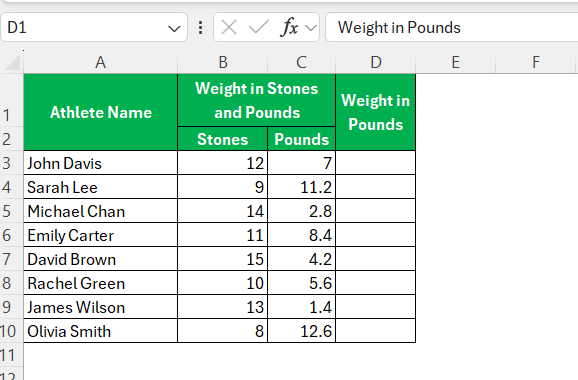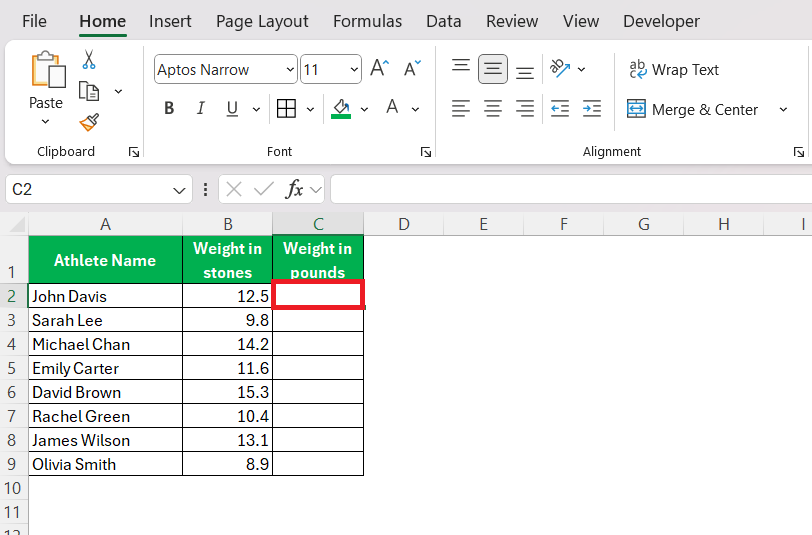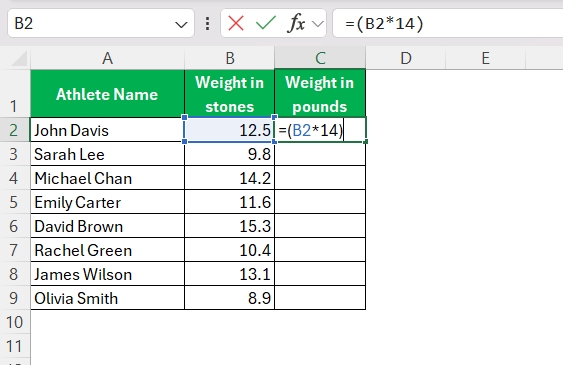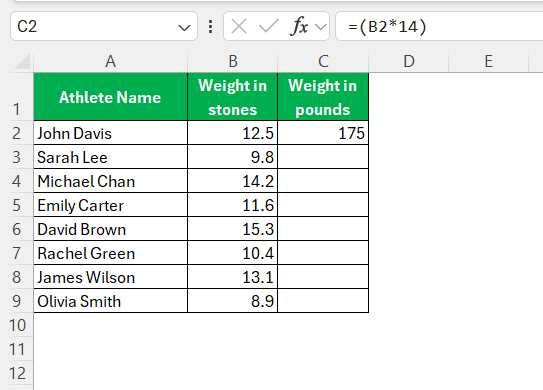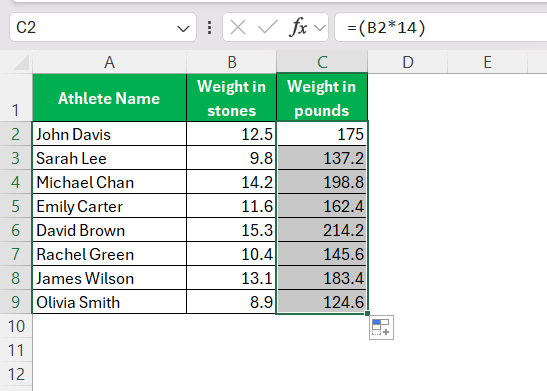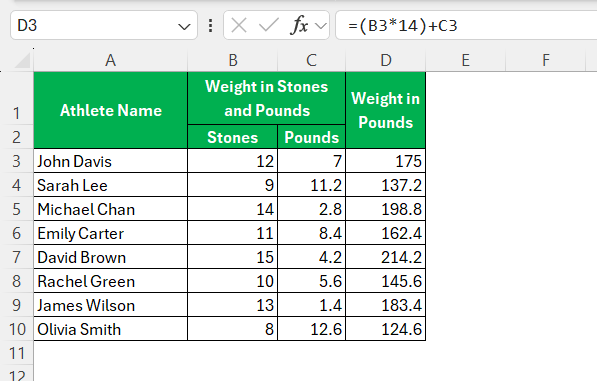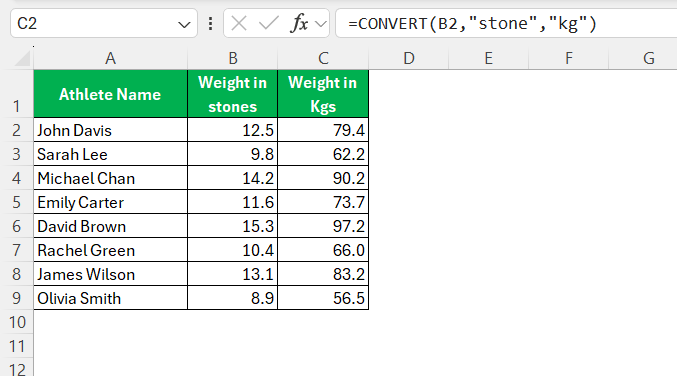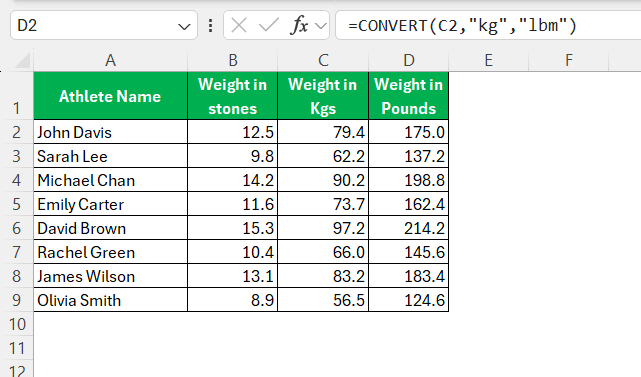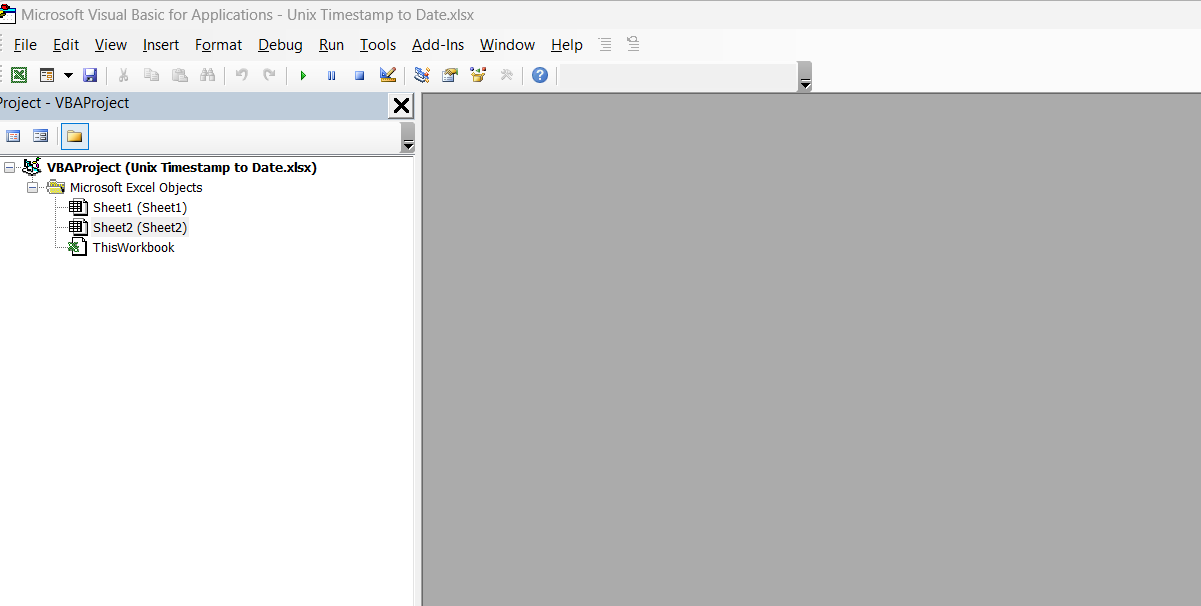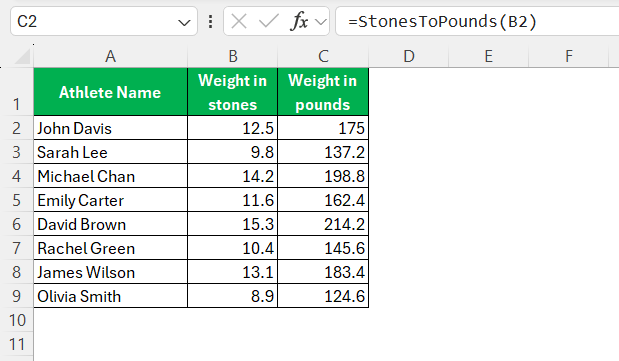When working with weight measurements, I often find myself needing to convert between different units. One common conversion is from stones to pounds. Since 1 stone is equal to 14 pounds, this conversion is straightforward in Excel. Let me walk you through how to convert stones to pounds efficiently.
Key Takeaways:
- Excel simplifies weight conversions, eliminating manual calculations.
- The formula =STONE_VALUE*14 quickly converts stones to pounds.
- The CONVERT function doesn’t support stones but can be used creatively.
- VBA macros can automate repetitive conversions efficiently.
- Troubleshoot errors by checking formulas, cell references, and formats.
Table of Contents
Introduction to Quick Conversions in Excel
The Power of Excel for Weight Conversions
In the realm of data manipulation, Excel is unparalleled, serving as a powerful ally for transforming and analyzing various forms of information. When it comes to weight conversions, particularly from stones to pounds, Excel simplifies the process, eliminating the need for manual calculations that often become cumbersome and error-prone.
By harnessing the built-in functions and formulas that Excel offers, anyone can swiftly convert large datasets with remarkable ease and precision.
Why You Might Need to Convert Stones to Pounds
Converting stones to pounds may be essential for a variety of reasons. In many fields such as healthcare, sports, and nutrition, weight measurements are critical and often need to be presented in different units for standardization and comparison purposes.
Additionally, if you’re working with international datasets, you’ll find the need to convert between metric and imperial units to align with local practices. Excel, with its swift and accurate conversion capabilities, steps in as an indispensable tool, ensuring that these conversions don’t become a hurdle in analysis or reporting.
Understanding the Stone and Pound Measurements
A Brief History of the Stone Measurement
The stone as a unit of weight has roots stretching deep into history, originating from trade and agricultural practices where standardized weights were vital. It was traditionally used in Great Britain and Ireland for body weight and goods like wool. Although its value varied from region to region in the past, it was standardized in 1835 in the United Kingdom to 14 pounds.
While the UK has since switched to the metric system, stones are still commonly used for body weight measurements in a cultural nod to historical practices.
How Pounds Fit into the Picture
Pounds, often abbreviated as ‘lb’ (from the Roman libra), have been a foundational unit in the imperial system, integral to weight measurement across various industries. Unlike stones, pounds are widely used in the United States, and they fit into the picture as the smaller units that make up a stone.
Understanding that one stone is equivalent to 14 pounds is crucial for accurate conversions and is particularly relevant when precise weight measurements are needed in fields such as medical dosing, engineering, shipping, and more.
Step-by-Step Guide to Convert Stones to Pounds
Inputting Your Data Effectively
Efficient data input is crucial for successful conversions in Excel. Begin by organizing your worksheet, with clearly labeled columns for stones and pounds.
If you’re working with stones and extra pounds, inputting the stone and pounds in separate columns.
Applying the Multiplication Formula
Once your data is neatly inputted, applying the conversion formula is your next step. Here’s how to proceed:
STEP 1: Select the cell where you want to display the converted value in pounds.
STEP 2: Enter the conversion formula: =(STONE_CELL*14), replacing STONE_CELL with the reference to the cell containing the stone value.
STEP 3: Press Enter, and the converted value in pounds appears.
STEP 4: To apply this formula to the entire column, drag the fill handle (a small square at the bottom right of the cell) down to copy the formula to other cells.
Remember, accuracy in referencing the correct cell is key to getting the correct conversions.
For converting stones and pounds (as separate values) to pounds only: =(STONES * 14) + POUNDS, where STONES is the cell reference containing the stone value and POUNDS is the cell reference containing the additional pounds.
Using the CONVERT Function
Excel’s built-in CONVERT function can also handle unit conversions, but unfortunately, it does not support stones directly. However, I can still use it creatively by breaking the conversion into two steps:
STEP 1: Convert stones to kilograms using:
=CONVERT(A2, “stone”, “kg”)
STEP 2: Convert kilograms to pounds using:
=CONVERT(B2, “kg”, “lbm”)
Advanced Excel Tricks for Conversion Efficiency
Using Functions and Macros to Streamline the Process
For frequent conversions, using functions and macros in Excel can greatly streamline your process. Create a custom function (UDF – User Defined Function) for stone-to-pound conversion by delving into Visual Basic for Applications (VBA).
I automate the process using a VBA function by following the steps below:
STEP 1: I press ALT + F11 to open the VBA Editor.
STEP 2: I insert a new module and enter the following code:
Function StonesToPounds(stones As Double) As Double StonesToPounds = stones * 14 End Function
STEP 3: I save and close the editor.
STEP 4: In Excel, I use the function just like any built-in function:
=StonesToPounds(A2)
This custom function makes my spreadsheet cleaner and easier to use. By doing so, you can transform repetitive tasks into one-click actions, saving time and reducing the likelihood of manual entry errors.
Troubleshooting Common Conversion Issues in Excel
Ensuring Accuracy in Your Calculations
Ensuring accuracy in your calculations is paramount. Start by verifying that your conversion formulas are correct and that you’ve referenced the appropriate cells. Double-check the cell format to prevent unintended automatic conversions by Excel.
Additionally, use sanity checks by comparing known converted values to your results to confirm consistency. Regular audits of your Excel workbook can catch any discrepancies early on.
What to Do When Formulas Don’t Work as Expected
If a formula doesn’t work as expected, don’t fret. Start by checking for common errors, like incorrect cell references or format mismatches. Make sure there aren’t any leading or trailing spaces, and that you haven’t accidentally used non-breaking spaces or other invisible characters.
Utilize Excel’s ‘Trace Precedents’ feature to ensure your formula is referencing the correct cells. If all else fails, consulting Excel forums or seeking out tutorials specific to your problem can provide valuable insights.
FAQ: Excel Conversion Solutions
What is the formula for stone to pounds?
The formula to convert stones to pounds in Excel is =STONE_VALUE*14. Simply multiply the number of stones by 14 to get the equivalent weight in pounds.
How can I convert pounds back to stones in Excel?
To convert pounds back to stones in Excel, divide the pounds value by 14: =POUNDS_VALUE/14. Use the INT function for whole stones and MOD for remaining pounds: =INT(POUNDS_VALUE/14) & " st " & MOD(POUNDS_VALUE, 14) & " lbs".
Is there a way to automate stone to pound conversions for new data entries?
Yes, to automate stone to pound conversions for new data entries, you can use Excel’s Table feature. Once your conversion formula is set up in a table column, any new data entry in that table will automatically calculate the pounds equivalent.
Can these conversion methods be applied to other units of measure?
Absolutely, these conversion methods can be applied to other units of measure in Excel. By adjusting the conversion factors and formulas, you can adapt these techniques for temperature, length, volume, and more, using Excel’s CONVERT function for a broad range of unit conversions.
Can you convert weights in Excel?
Yes, you can convert weights in Excel using the CONVERT function, which allows you to convert from one unit to another, such as kilograms to pounds, ounces to grams, and more, making it a versatile tool for handling different weight measurements.
John Michaloudis is a former accountant and finance analyst at General Electric, a Microsoft MVP since 2020, an Amazon #1 bestselling author of 4 Microsoft Excel books and teacher of Microsoft Excel & Office over at his flagship MyExcelOnline Academy Online Course.

